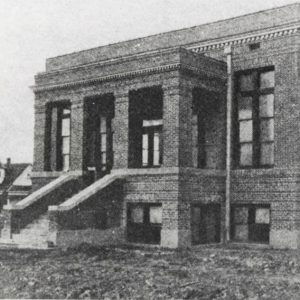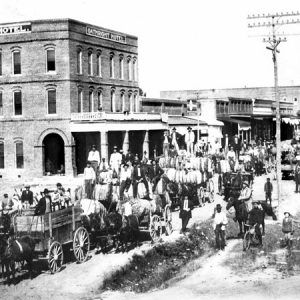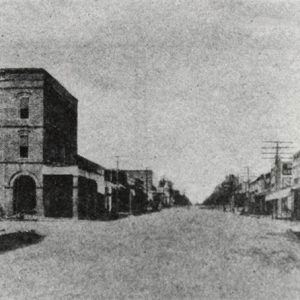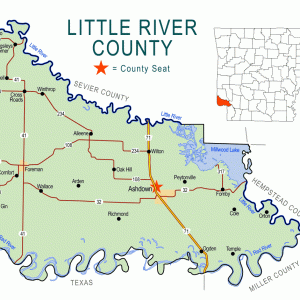calsfoundation@cals.org
Foreman (Little River County)
aka: New Rocky Comfort (Little River County)
| Latitude and Longitude: | 33º43’18″N 094º23’49″W |
| Elevation: | 417 feet |
| Area: | 1.98 square miles (2020 Census) |
| Population: | 977 (2020 Census) |
| Incorporation Date: | February 20, 1959 |
Historical Population as per the U.S. Census:
|
1810 |
1820 |
1830 |
1840 |
1850 |
1860 |
1870 |
1880 |
1890 |
1900 |
|
– |
– |
– |
– |
– |
– |
– |
– |
– |
– |
|
1910 |
1920 |
1930 |
1940 |
1950 |
1960 |
1970 |
1980 |
1990 |
2000 |
|
– |
– |
– |
5,699 |
7,607 |
1,001 |
1,173 |
1,377 |
1,267 |
1,125 |
|
2010 |
2020 |
|
|
|
|
|
|
|
|
|
1,011 |
977 |
|
|
|
|
|
|
|
|
The city of Foreman, also known as New Rocky Comfort, was at one time the county seat of Little River County. Located about twenty miles north of Interstate 30 on State Highway 41, the city’s primary industry is a cement factory that was built in 1957 and renovated in 2007.
Before the beginning of the Cenozoic Era, the southwestern corner of Arkansas was covered by a shallow sea. Layers of sediment deposited on the seabed formed chalk and lime, which are the principal substances found in the terrain surrounding the city of Foreman. A natural spring supported a stand of willow trees and attracted wildlife and human visitors to the area, which became known as both Willow Springs and Rocky Comfort. William Storey reportedly often visited the region as early as 1812. Henry Hawkins established a plantation near the spring, and other settlers began to build cabins in the area. Henry Yauger built a steam gin, and a Roman Catholic church was built out of logs at Rocky Comfort in 1845. That building was reportedly burned by Federal soldiers for firewood during the Civil War. An Episcopal mission was also started in Rocky Comfort during the 1840s.
After the war, the county seat was moved to Rocky Comfort, where it remained until 1880, when it was moved again to Richmond (Little River County). The city grew rapidly at this time, with six stores, three lawyers, a hotel, and a blacksmith shop. A school, known as the Rocky Comfort Institute, had been started before the war and reopened even before the war ended. During the nineteenth century, the school met in several locations, including private houses and churches, until a brick building was erected for the schoolhouse. The Masonic lodge met in the second floor of the schoolhouse.
In 1895, the Arkansas and Choctaw Railroad built a line from Ashdown (Little River County) to Arkinda (Little River County) that passed one mile north of Rocky Comfort. Over the following years, new homes were built near the railroad depot, and businesses moved to be near the railroad. Although the depot and the post office were both designated Foreman—named for a civic leader in Texarkana (Miller County)—the citizens called the city New Rocky Comfort. Until 1959, legal documents describing property in the city used both names. The federal census even counted the two municipalities separately in 1940 and 1950, in spite of the fact that residents treated them as one and the same community. The county seat was moved from Richmond to Foreman in 1902, remaining there for three years until it was moved again to Ashdown. School District 25 of Little River County was centered in Foreman, beginning in 1901 with 150 students. The district eventually consisted of ten separate schools, including Unity School, which was designated for African American students.
Foreman has experienced two documented lynchings of African American men. In 1902, a man known as Hosey McCoy was murdered there for allegedly assaulting a white woman, and in 1917, a man named Aaron Jimerson was lynched for an alleged attack on a local constable.
The principal crop of the surrounding area was cotton, but city leaders recognized the industrial potential of the chalk hills surrounding Foreman. During the 1920s, a cement factory was built, but the Great Depression bankrupted investors in the plant and it never opened. During and after the Depression, cotton farming was replaced by cattle farming. This increased unemployment in the area, since cattle farming requires fewer workers than does raising cotton. By the middle of the 1950s, the population of Foreman had dwindled, and it appeared that the city might be abandoned in a few more years.
This changed in 1957, when the Arkansas Louisiana Gas Company invested $15 million to build a cement plant in Foreman. That plant, now owned by the Ash Grove Cement Company, thrived and provided jobs to area residents. When the school system was desegregated in the following years, the Unity School became a junior high school for the entire district. The Foreman School District grew in the following years due to the consolidation of local school districts. It is one of two public school districts in Little River County and, by 2011, had approximately 550 students.
In the twenty-first century, Foreman advertises itself as a haven for hunting and fishing, as well as for shopping in an old-fashioned downtown. The 1902 jail is now a city museum and is one of four buildings in the city listed on the National Register of Historic Places. The Episcopal church, built in 1898, is also on the National Register. The city has several churches, a forty-acre park, and a community center. Country singer Tracy Lawrence holds an annual concert in Foreman, where he was raised, to benefit a foundation that funds education for children from Foreman and the surrounding area.
For additional information:
Beasley, Bill. Little River County. Ashdown, AR: Little River County Historical Society, 1975.
Foreman, Arkansas. http://www.foremanar.com/ (accessed February 28, 2025).
Foreman, Gene. “Foreman is Down to the Rocks That It’s Stranded On.” Arkansas Gazette, April 14, 1957, p. 8A.
Steven Teske
Butler Center for Arkansas Studies








Foreman could use a McDonald’s or a grocery store. I understand the importance of small businesses, but change is necessary for communities’ economies to thrive and not dwindle down to just a memory of what once was and what could have been.